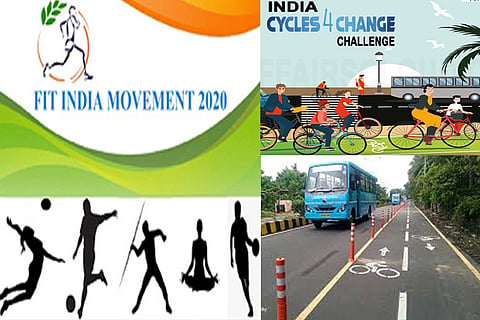

Chennai
In June this year, the Ministry of Housing and Urban Development had announced a challenge called Cycles for Change, as part of its Smart City Mission. And with good reason too, as the need for non-motorised transport aka cycling and walking was felt acutely in the aftermath of the COVID-19 crisis, when public transport was restricted. A survey conducted by the Chennai Corporation in the backdrop of this challenge unearthed pain points that hindered greater adoption of cycling to commute among many citizens. Almost one in every two respondents had cited potholes, open drains and traffic congestion as deterrents to cycling on city roads. In fact, one in every three citizens said bicycling to work would have definitely been a possibility, if only they were offered a convenient and safe passage.
Historically, Chennai has been a frontrunner in this respect as it is the first Indian city to have adopted a Non-Motorised Transport Policy (NMTP) with an aim to promote walking and cycling in the city, way back in 2014 itself. Since then, the government has undertaken measures to make cycling a part of the city’s commuting lexicon - from the introduction of 17 kms of dedicated bicycling lanes in stretches such as Anna Salai, Kamarajar Salai, Besant Avenue Road, to the unveiling of the ride sharing services comprising Smart Bikes to bridge last mile connectivity for commuters using the Chennai Metro.
However, there are challenges that have befallen those opting for bicycling here. Apart from unauthorised parking of motorised vehicles on cycling lanes, and other vehicles using up the cycling lane, which constitutes encroachment, there’s also the issue of uneven lane sizes in different stretches of the city. This compels cyclists to ride on the unmarked section of the road making them more vulnerable to accidents. Both TN and its capital are top rankers when it comes to fatalities among cyclists in road accidents. Last year, as many as 230 cyclists lost their lives in TN, while 43 were killed in Chennai. Cyclists also have to deal with a case of bad attitude, vis-a-vis commuters in motorised vehicles, who are often guilty of either not giving space to a bicycle rider or over-speeding in regions with clear demarcation of cycling lanes.
There are measures needed to turn around Chennai’s image as a more bicycling friendly city. For starters, it could borrow a leaf from European cities that are now reimagining their urban spaces, keeping cyclists at the Centre. A town council in Berlin painted yellow lines on a few roads to rid them of car lanes, something even Chennai could consider, during a car-free Sunday initiative. Likewise, in France, a subsidy of 50 euros is being offered to bicycle commuters for repairs in order to ready their vehicles for post lockdown rides.
Stakeholders in urban planning say there is a need to redesign street intersections to give priority to cyclists while minimising conflict points and enhancing safety aspects. The Centre has recommended low-cost interventions including pop-up cycle lanes and traffic-calmed/non-motorised zones to help build robust cycling networks. The City Corporation had set for itself targets through the NMTP, one of which was to increase the share of pedestrians and cyclists to at least 40 per cent. The pandemic might just be the right time for Chennai to make this a reality.
Visit news.dtnext.in to explore our interactive epaper!
Download the DT Next app for more exciting features!
Click here for iOS
Click here for Android